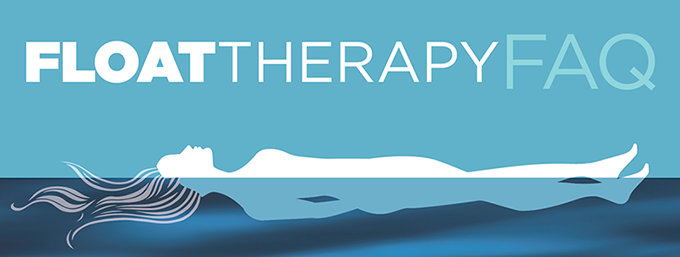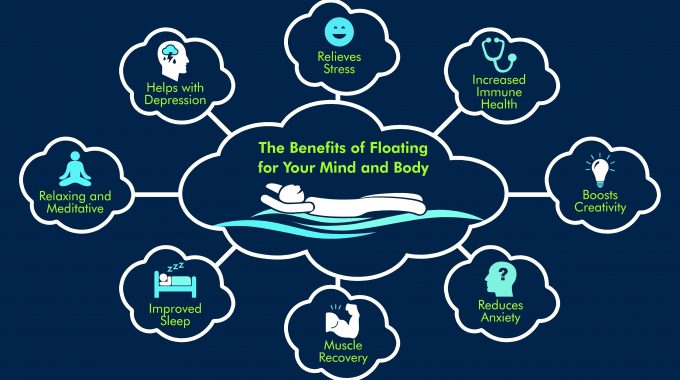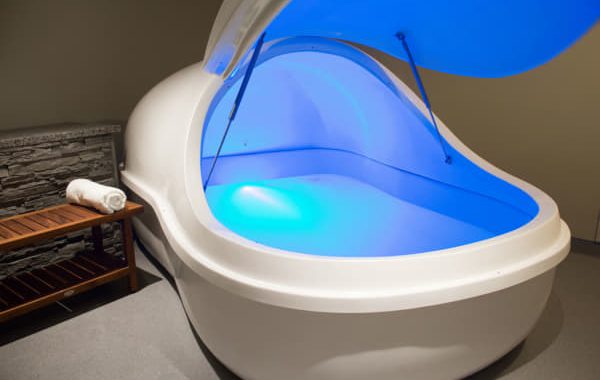
Float Therapy FAQ
What can I expect during my first float?
There’s no one-size-fits-all answer for this question since every person is different.
First-time floaters can have different expectations, which may also lead to disappointment in yourself, the inability to focus, relax or meditate (which is challenging for most people!). We like to say that you should understand the basics of how it works, but to go in with minimal expectations.
What do I need to do to prepare?
Do not drink coffee before you float – we know how unrelaxing coffee jitters are! Eating a heavy meal is not suggested as it may hinder you from relaxing fully, but a light meal an hour and a half before is good so that your stomach is not grumbling the whole time.
How is the water cleaned?
Each float center is different so it is best to consult your center if this is a concern of yours. However, the water in each pod is sterilized by the large amount of salt that is used. Float pods also contain filters that are run between each float and often times while the tank is empty.
What if I get salt in my eyes?
Most float centers have eye-flushes in the room with you so that if you do get salt in your eye you can flush it out with the fresh water.
Can I float while pregnant?
As with anything you should check with your physician before floating while pregnant, especially in your third trimester. But, there are very few reasons that you would not be able to. In fact, there are many additional benefits for floating while pregnant.
- You can float in a certain position that relieves all of the extra weight.
- Magnesium is especially important while pregnant and floating helps boost natural levels in the body.
- Your pregnancy aches and pains, and inflammation, can be relieved by floating
Can I get out of the tank during the session?
Your float session will be in a private room. You can leave the door to the pod open if that makes you feel more comfortable! As a reminder, the air temperature inside the pod will feel cooler if the pod cover is open during your session.
Can I drown if I fall asleep?
Many people choose to sleep while they are in the tank. There are only about 10 inches of water in each tank and because of the large amount of salt the water is very buoyant.
Do I need to bring a bathing suit?
You can float nude or you can wear a bathing suit, it is totally up to you and what you are comfortable with, however clothing will become weighed down with salt and may become a distraction.
Do I bring anything to float with?
Check with the float center that you are going to, but you should not need to bring anything. They should provide you with towels, robes, ear plugs, and anything else you may need. After your float you
Can I float with contact lenses?
We would suggest taking the lenses out since you will have your eyes closed for a long period of time, may get salt in them, and may fall asleep!
I’m claustrophobic, can I float?
Many people with claustrophobia do not have a hard time floating! You are always in control of the environment, with the ability to open the door, get out, or in some tanks even turn on a light. You may find that you quickly lose track of the walls and the space and ease into a relaxed state.
Can I float after having my hair dyed?
Definitely check the clarity of the water running from your hair when you shower. If there is still colorant coming out, we suggest waiting so that the Epsom Salt does not strip any color.
How long has floating been around?
Float therapy was invented in 1954 by a physician, John C. Lilly at the National Institutes of Health (NIH) to study the effects of sensory deprivation on the mind.
Do I prune up or get dehydrating soaking for so long in the Epsom Salt?
Not at all. The salt does not cause your skin to get pruny – it actually makes it feel silky smooth.
How long are your sessions?
Our sessions are 60-min to 90-min long, you will also have 5-10 minutes before and after your float to shower and get dressed.
You can also leave the float room at any time during your session. Children 12 and under can reserve 30-minute sessions. For children/pediatric floats, an adult must be present in the room (not in the water).
We also recommend that you carve out time post-float for reflection and continued relaxation. Coming out of a float session, you might feel euphoric or even a little disoriented; you’ve just had a solid hour of time to yourself, so jumping right back into daily life might be slightly jarring.
Why is magnesium so important?
Most Americans are grossly deficient in magnesium — a vital mineral. Floating is a great way to absorb magnesium from the Epsom salts, which relieves pain and muscle aches, decreases restlessness and promotes calm, increases energy, helps you fall asleep, is good for your heart, is beneficial to skin, helps with bone density & more.
How often do you recommend floating?
Some avid floaters can’t get by without floating daily. Others prefer to float weekly or even once a month. The benefits of float therapy are cumulative and seen when you float on a frequent basis.
For first-timers: Since it’s such a new and different experience, your first float may not be the best determination of whether or not float therapy is for you. We recommend floating at least three times (that’s how long they say it takes to get hooked!) in the beginning.
What are some studies that prove floating is effective?
Floating has grown in popularity over the past several years, and a group of scientists are currently invested in research on the effects of float therapy on different types of distress, including PTSD. One of those researchers is Dr. Justin Feinstein, who believes so strongly in the potential of float therapy that he built his career and lab around trying to prove that.
Research from Feinstein’s lab shows that “meditating activates parts of the brain associated with attention and decreases activation in the amygdala, the part of the brain that kicks off the fight-or-flight response to a real or perceived threat.” Feinstein himself believes that floating could be a “shortcut” to reach that meditative state and realize the benefits of being in that state. And, the National Institutes of Health (NIH) agrees that research supports meditation for lowering blood pressure, easing symptoms of anxiety and depression and more, and the agency funds research on the topic. (Source: TIME Magazine)
Here are a few other studies and takeaways:
- “Significant beneficial effects [from float therapy] were also found for sleep difficulties, difficulties in emotional regulation, and depression.” (Source: Promising effects of treatment with flotation-REST (restricted environmental stimulation technique) as an intervention for generalized anxiety disorder (GAD): a randomized controlled pilot trial.)
- “Stress, depression, anxiety, and worst pain were significantly decreased, whereas optimism and sleep quality significantly increased for the flotation-REST group. There was also a significant correlation between mindfulness in daily life and degree of altered states of consciousness during the relaxation in the flotation tank.” (Source: Beneficial effects of treatment with sensory isolation in flotation-tank as a preventive health-care intervention – a randomized controlled pilot trial)
Who benefits from floating?
Nearly everyone! Specifically:
- Those who work high-stress jobs or are going through stressful times
- Those with high blood pressure
- Pregnant women (you’re weightless in the tank, read more below!)
- Individuals with anxiety
- Those with post-traumatic stress disorder (PTSD)
- Those with joint, bone, spine, muscle pain
- Those with fibromyalgia
- Those with sleep troubles or insomnia
- Athletes for improved recovery time and visualization techniques
It’s also highly effective for those wanting to improve visualization techniques (think of it as a mental rehearsal to achieve goals and desires), as well as those seeking deeper meditative states.
Are there restrictions on those who can float?
Floating is not recommended for epileptics whose epilepsy is not under medical control, for anyone under the influence of alcohol or drugs, for those with infectious diseases or open skin wounds, or those with difficulties with bladder and/or bowel control (incontinence).
Can I float if I’m menstruating?
Yes, please follow the same protocol as if you were swimming. We do require a signed waiver prior to floating which discusses any liabilities when floating.
Do I need to bring anything?
We provide towels, earplugs, shampoo, body wash, conditioner and a private shower area in our float room. After your float, please bring a brush or comb, a contact lens holder and any other desired personal items for use before you leave the float room.
Can more than one person float in the pool at a time?
While our pod is spacious, it will not accommodate two adults comfortably. Having more than one person in the pod may also be a distraction that interferes with relaxing.




